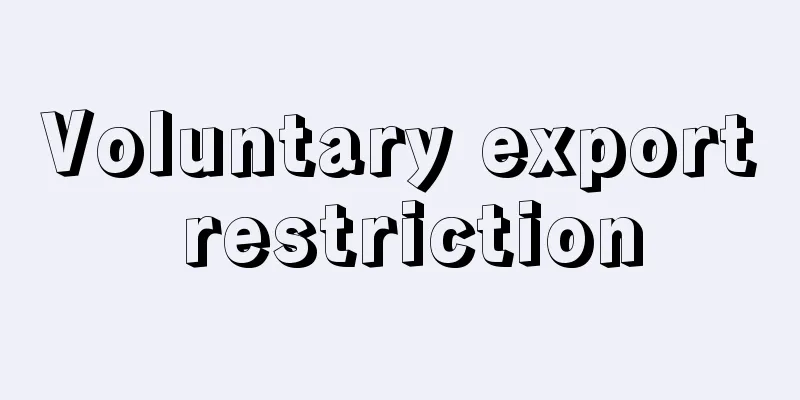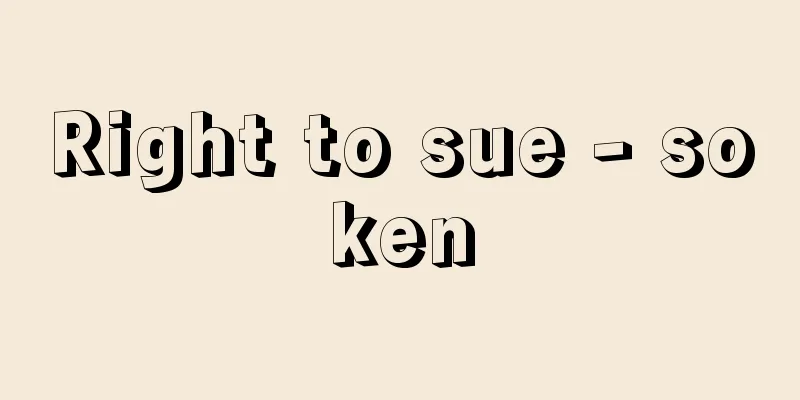Voluntary export restriction

|
A safeguard is a temporary measure taken by an exporting country to avoid import restrictions by the other country, in which the exporting country voluntarily restricts export quantities, prices, etc. As a means to counter injury to domestic industries caused by a sudden increase in imports of certain goods, the World Trade Organization (WTO) has safeguard clauses in Article XIX of the GATT and emergency import restriction measures under the WTO Safeguard Agreement. However, in order to invoke these safeguards, consultations with the countries concerned must be concluded, and they must be implemented in accordance with the WTO's non-discriminatory principle, and must apply to imports from all member countries, not just specific countries. As a result, outside the framework of the WTO, importing countries have often forced exporting countries to impose voluntary export restrictions on certain goods. Voluntary export restraints arose as Japan's export power grew, and from the 1970s onwards, restrictive measures were successively taken on textile products, steel, color televisions, automobiles, machine tools, and also on steel and VTRs (video tape recorders) bound for the EC (European Community, now the EU = European Union) from Japan. The number of target countries was subsequently gradually expanded to include the US versus the EC (EU), and Japan, the US, EC (EU) versus NIES (Newly Industrializing Economies). Methods of voluntary export restraints in Japan include export cartels under the Import and Export Transactions Act, Market Order Agreements (OMA) negotiated between governments, and administrative guidance from the government. [Kisuke Tanaka] [References] | | | |Source: Shogakukan Encyclopedia Nipponica About Encyclopedia Nipponica Information | Legend |
|
相手国側の輸入制限を回避するための一時的な措置として、輸出国側が自主的に輸出数量や価格などの規制を行うこと。特定商品の輸入急増による国内産業の損害に対抗する手段として、世界貿易機関(WTO)において、ガット第19条のセーフガード条項と、WTOのセーフガード協定による緊急輸入制限措置がある。しかし、この発動には関係国との協議の成立が必要であり、運用はWTOの無差別原則に従って、特定国のみでなくすべての加盟国からの輸入品に適用しなければならない。そのため、WTOの枠外で、輸入国は特定商品の輸出国に対してなかば強制的に輸出自主規制を求めてくることが多くなった。 輸出自主規制は、日本の輸出力増大に伴って発生したものであり、1970年代以降、日本からアメリカ向けの繊維製品、鉄鋼、カラーテレビ、自動車、工作機械、さらにEC(ヨーロッパ共同体。現EU=ヨーロッパ連合)向けの鉄鋼やVTR(ビデオテープレコーダー)などに相次いで規制措置がとられた。その後対象国もしだいに拡大され、アメリカ対EC(EU)、日本・アメリカ・EC(EU)対NIES(新興工業経済地域)などに及んでいる。わが国の輸出自主規制の方法には、輸出入取引法による輸出カルテル、政府間交渉による市場秩序維持協定(OMA)、政府の行政指導などがある。 [田中喜助] [参照項目] | | | |出典 小学館 日本大百科全書(ニッポニカ)日本大百科全書(ニッポニカ)について 情報 | 凡例 |
<<: Import and Export Transactions Law
>>: Yujuku [Hot Spring] - Yujuku
Recommend
Mibu clan
A medieval local feudal lord in Shimotsuke. Based ...
Discounting of bills
Also simply called "discount." A type of...
Mizuhiki crab (Mizuhiki crab) - Mizuhiki crab (English name) Eplumula phalangium
A decapod crustacean of the family Polytrichum. It...
Italian National Association (English: Società Nazionale Italiana)
The association was founded in 1857 with the goal ...
Trypanosoma cruzi
…[Kawaguchi Hiroaki]. … *Some of the terminology ...
New Science Lectures - Shinkagakukowa
Also known as "Dialogues on the New Sciences....
Cistercian Order - Sacer Ordo Cisterciensis
A Catholic monastic order founded in Cîteaux, Fran...
River Festival
〘Noun〙 A water god festival held in the sixth and ...
Kusano
Ichibacho is a former post town in the eastern pa...
Carp streamer - Koinobori
An exterior decoration erected on the Boys' F...
Chuncheon
A city in the western part of Gangwon Province, S...
Direct current - chokuryu (English spelling)
A current whose direction does not change over ti...
Masked palm civet (white nosed heart)
It is a mammal of the carnivora family, civets, wi...
Plasterer - Active
Originally called kabe-nuri (wall plasterers), th...
Crossopterygii
...The oldest of this group is the Placodermi, wh...








![Tagawa [city] - Tagawa](/upload/images/67cc1ea077a59.webp)
